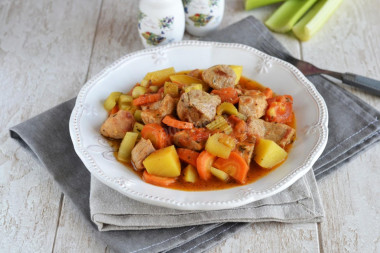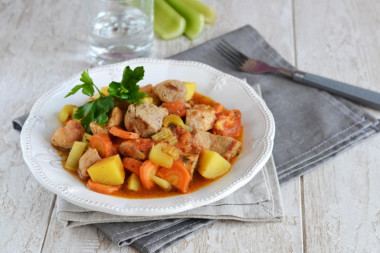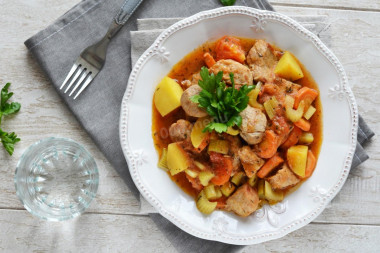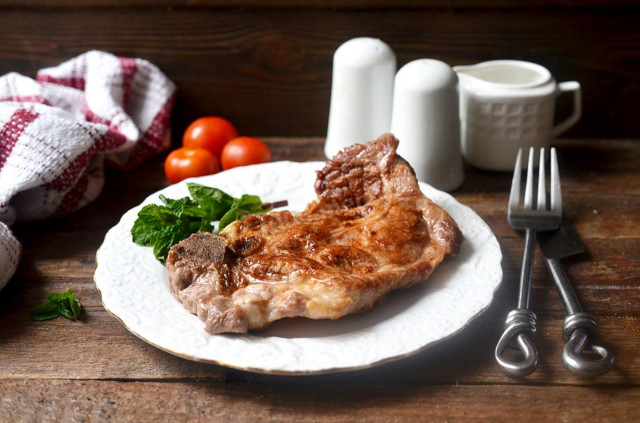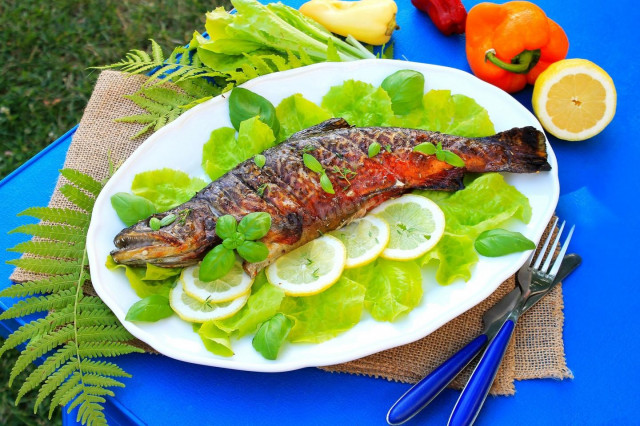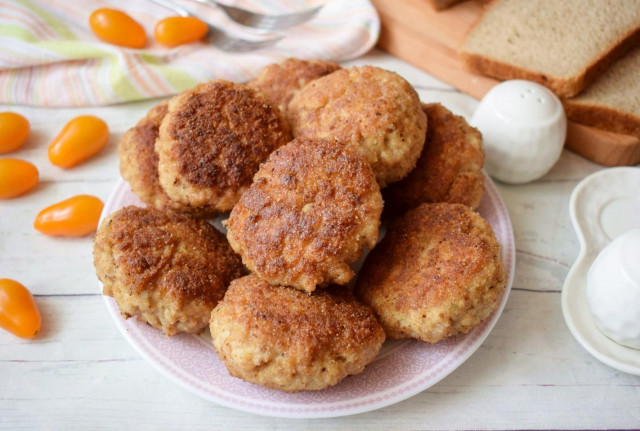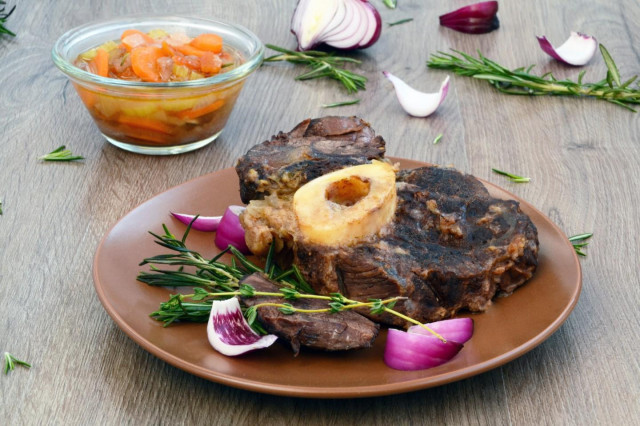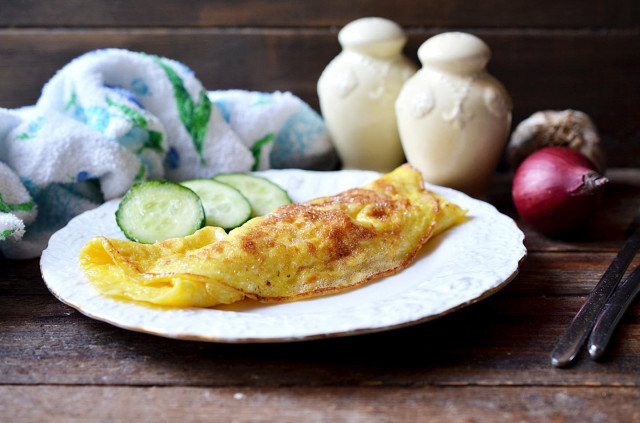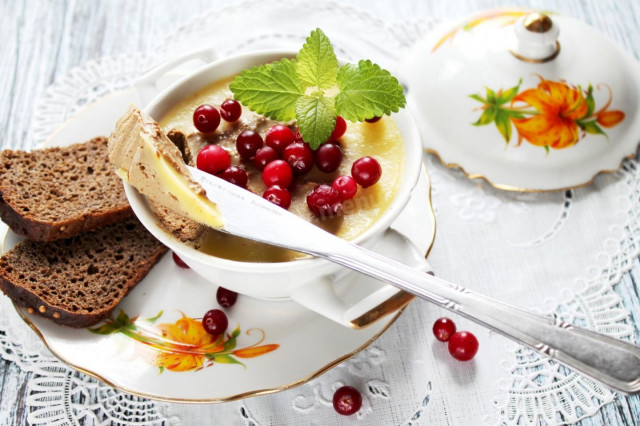Composition / ingredients
Step-by-step cooking
Step 1:
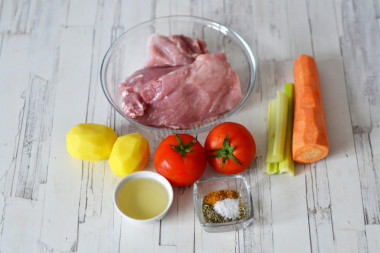
How to make meat with vegetables in a cauldron? Prepare the ingredients for the dish. You can take any meat: pork, beef or lamb. For this dish, it is better to take the pulp with a small amount of fat, without veins and bones. Tomatoes are better to take strong, but ripe.
Step 2:
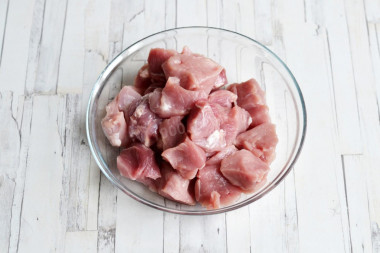
Wash the pork, dry it and cut it into medium-sized cubes. You do not need to cut it large, otherwise the meat will take a lot of time to stew, and it should be ready about the same time as the rest of the vegetables. When stewing for a long time, all the vegetables will boil very much.
Step 3:
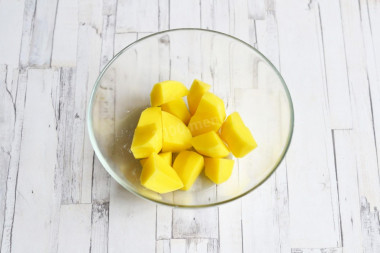
Cut the potatoes into medium cubes. It is not necessary to cut too large - it will take a long time to cook, and it is inconvenient to eat it, but it is also not worth cutting too small - it will quickly boil and lose its shape.
Step 4:
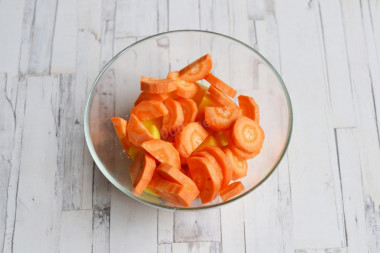
Wash, peel and cut the carrots into semicircles. If the diameter of the carrot is small, you can cut it into circles.
Step 5:
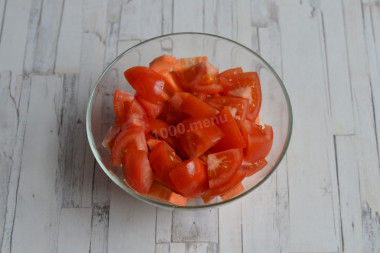
Wash the tomato, dry it and cut it into cubes.
Step 6:
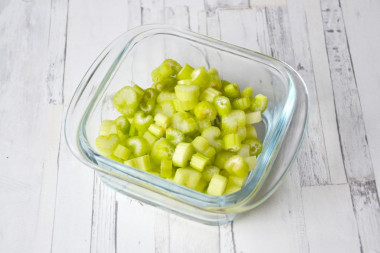
Cut the celery into medium slices.
Step 7:
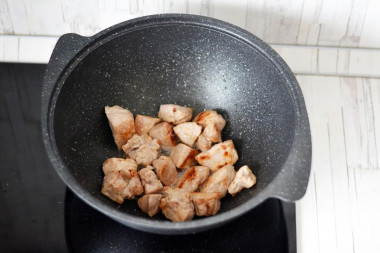
Heat vegetable oil in a cauldron. Lay out the meat and fry quickly, stirring, over high heat until golden brown. At first, the meat releases a lot of liquid, as the moisture evaporates, it will begin to fry.
Step 8:
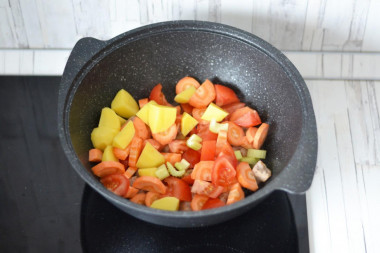
Add potatoes, carrots, tomatoes and celery to the meat. Mix everything and fry together for about 3-5 more minutes.
Step 9:
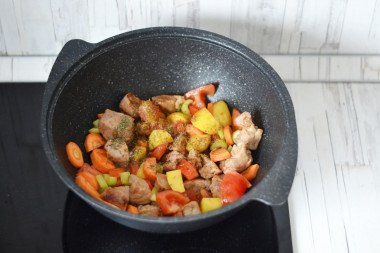
Season meat with vegetables with salt, pepper and sprinkle with dried herbs. Mix everything carefully so as not to overwhelm the vegetables.
Step 10:
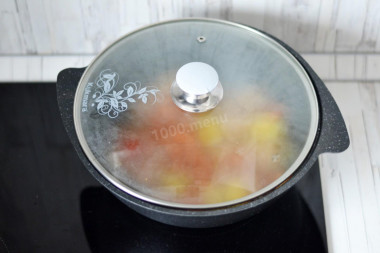
Reduce the fire to a minimum. Cover the cauldron with a lid and simmer all together for about 20 minutes until the meat and vegetables are ready. Vegetables should be stewed in their own juice. However, if in the process it is clear that there is no juice or it has evaporated quickly, you need to add about 50-100 ml of water to the cauldron. If you want the dish to be with gravy, then you can add more water. By the way, water can be replaced with meat or vegetable broth. This will give the dish new flavors.
Step 11:
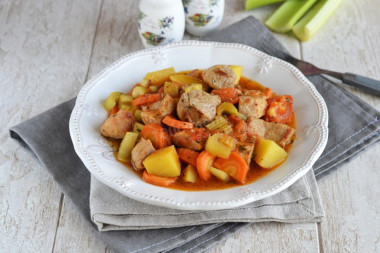
Put the finished meat and vegetables on plates and serve to the table. Enjoy your meal!
During stewing, meat and vegetables were combined in one cauldron, so there is no need to prepare an additional side dish for such a dish. Depending on your preferences, you can add any vegetables: bell peppers, zucchini, onion, garlic.
Any oils are useful only until a certain temperature is reached - the point of smoking, at which the oil begins to burn and toxic substances, including carcinogens, are formed in it. How to determine the roasting temperature and choose the best oil for frying, and which is better not to use at all, read here .
Since the degree of salinity, sweetness, bitterness, sharpness, acid, burning is individual for everyone, always add spices, spices and seasonings, focusing on your taste! If you put some of the seasonings for the first time, then keep in mind that there are spices that it is especially important not to shift (for example, chili pepper).
Caloric content of the products possible in the composition of the dish
- Tomatoes - 23 kcal/100g
- Pork fat - 333 kcal/100g
- Pork meat - 357 kcal/100g
- Pork - low-fat roast - 184 kcal/100g
- Pork chop on a bone - 537 kcal/100g
- Pork - schnitzel - 352 kcal/100g
- Pork Shoulder - 593 kcal/100g
- Hog leg - 113 kcal/100g
- Pork - 259 kcal/100g
- Carrots - 33 kcal/100g
- Dried carrots - 275 kcal/100g
- Boiled carrots - 25 kcal/100g
- Fresh basil - 27 kcal/100g
- Dried basil - 251 kcal/100g
- Marjoram - 271 kcal/100g
- Ground black pepper - 255 kcal/100g
- Thyme - 101 kcal/100g
- Dried thyme - 276 kcal/100g
- Thyme - 276 kcal/100g
- Vegetable oil - 873 kcal/100g
- Salt - 0 kcal/100g
- Celery stalk - 12 kcal/100g


